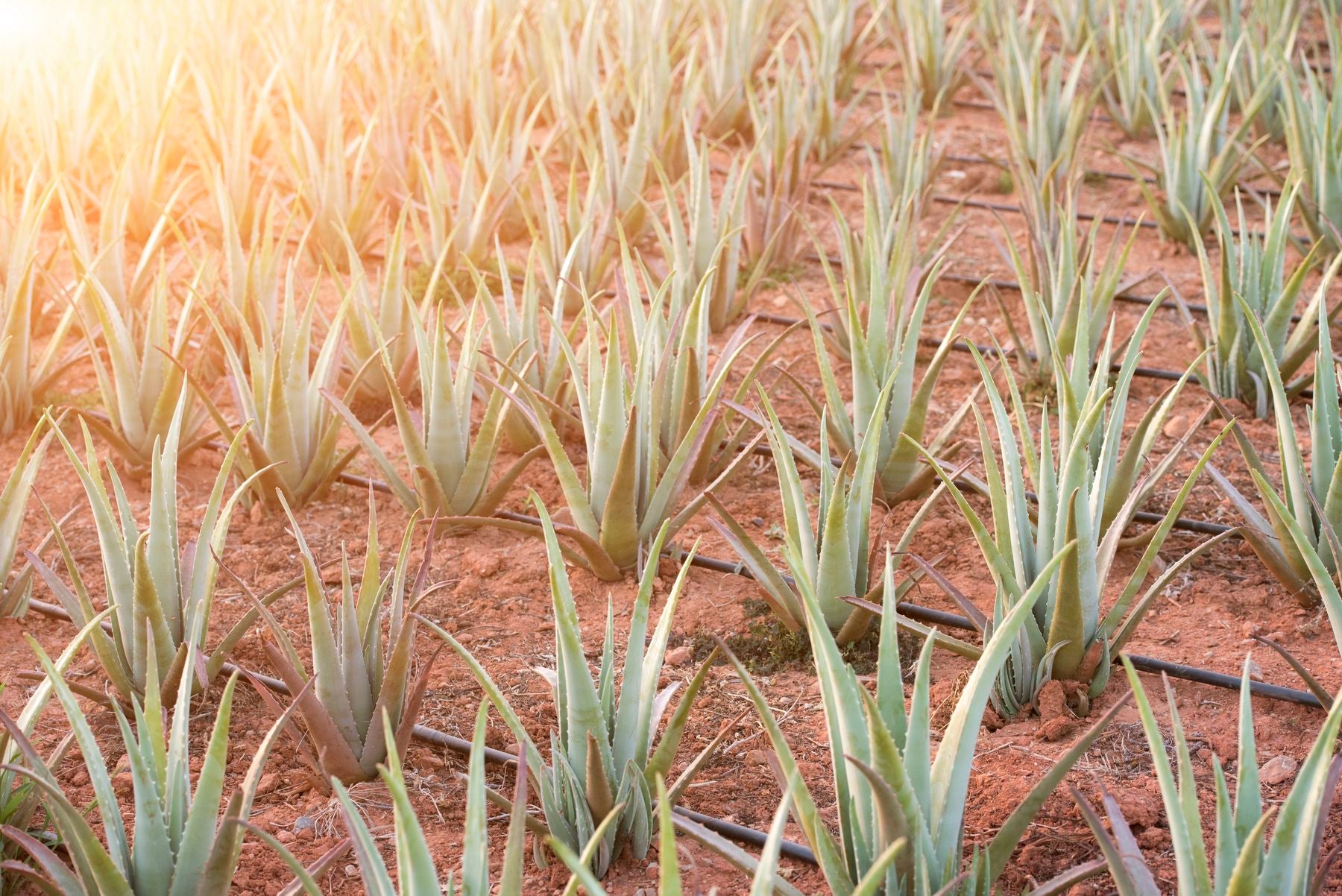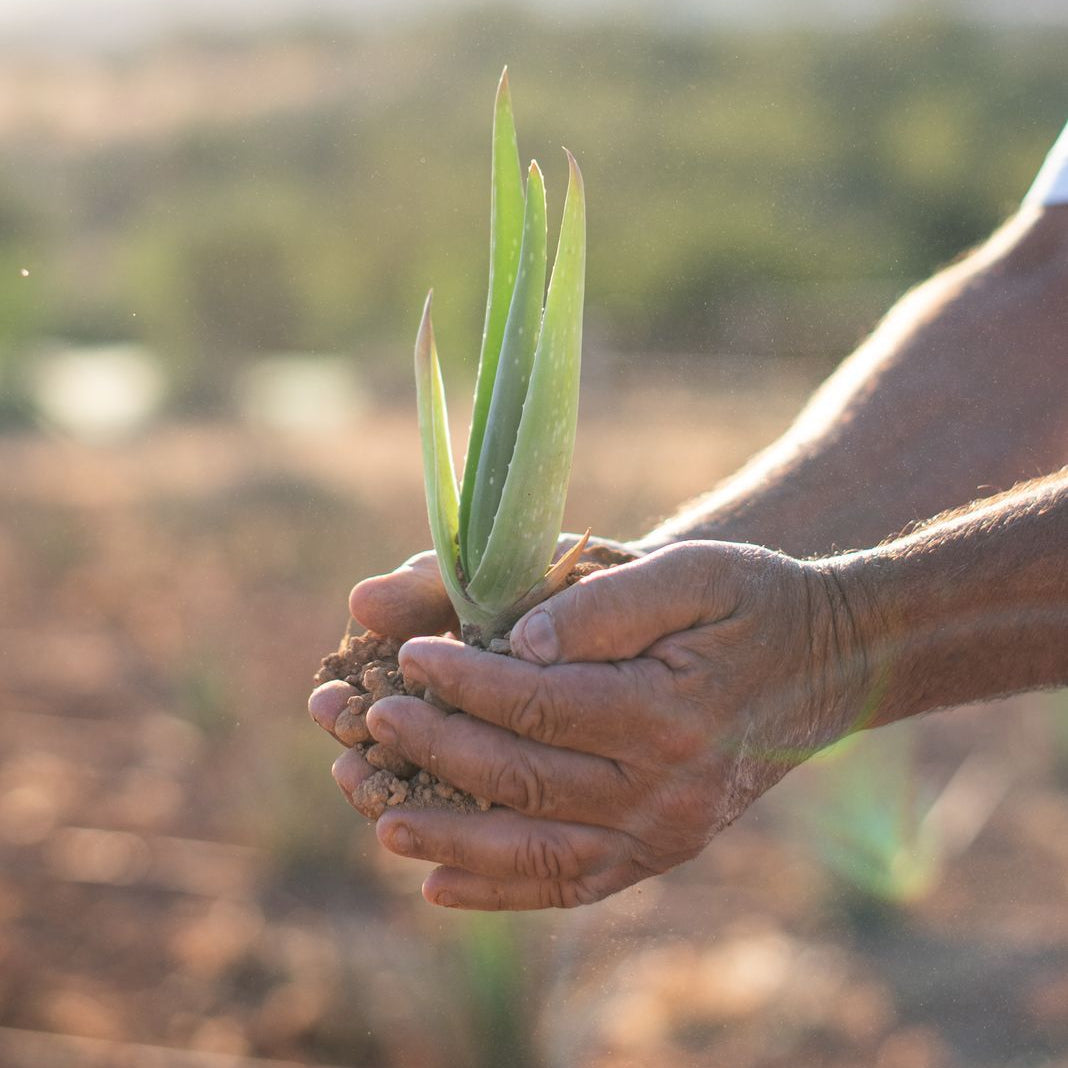
Αλόη

Γνωρίστε την αλόη
Το «μαγικό φυτό της αθανασίας», με ιστορία, 4.000 χρόνων
Αλόη. Το αρχαιότερο φαρμακευτικό φυτό. Αζτέκοι, Αιγύπτιοι, Έλληνες, Ινδοί, Κινέζοι, Πέρσες χρησιμοποιούσαν το μαγικό φυτό, με τις θαυμαστές ιατρικές ιδιότητες.
Στην Αρχαία Ελλάδα το χρησιμοποιούσαν οι γιατροί στις περισσότερες συνταγές τους. Ο Αριστοτέλης είχε μυήσει τον Μέγα Αλέξανδρο στο μαγικό, θεραπευτικό κόσμο της αλόης. Εκείνος τον συμβούλεψε να καταλάβει το νησί Socotra (στην σημερινή Υεμένη), προκειμένου να εφοδιαστεί με επαρκείς ποσότητες αλόης, που φύτρωναν στο νησί. Έτσι, θα είχε πάντα στη μάχη το αποτελεσματικότερο φαρμακείο πρώτων βοηθειών, για κείνον και τα στρατεύματά του.
Στην Αρχαία Αίγυπτο, θεωρούσαν την αλόη μαγικό ελιξίριο νεότητας. Αρχαίοι μύθοι συνδέουν την αιώνια ομορφιά της Κλεοπάτρας και της Νεφερτίτης, με τις θαυματουργές, καλλυντικές ιδιότητες του φυτού.
Κατά τους νεότερους χρόνους, διάσημοι υπερπόντιοι ταξιδευτές και θαλασσοπόροι όπως ο Χριστόφορος Κολόμβος, ο Μάρκο Πόλο, είχαν πάντα μαζί τους αλόη. Το φυσικό φάρμακο, προκειμένου να καλύπτουν με σχετική ασφάλεια τα ταξίδια τους.
Η φυσική «μαγεία» της αλόης είναι αυτή που:
- αποτοξινώνει τον οργανισμό
- ενισχύει το ανοσοποιητικό σύστημα
- ευνοεί την ανάπτυξη νέων, υγιών κυττάρων
- κατευνάζει το νευρικό σύστημα
- καθαρίζει το πεπτικό σύστημα
- μειώνει τον κίνδυνο καρδιαγγειακών παθήσεων
- καταπολεμά το στρες
- αναζωογονεί τα μαλλιά
- βελτιώνει την εμφάνιση
- χαρίζει ενέργεια, ζωντάνια και μια βαθιά αίσθηση ευεξίας, ενισχύοντας έτσι συνολικά το αίσθημα αυτοπεποίθησης και αυτοεκτίμησης.
Με πολλά ενεργά συστατικά, που ενισχύουν και θωρακίζουν τον ανθρώπινο οργανισμό, η αλόη αποτελεί την ασπίδα της Φύσης ενάντια σε μια σειρά από αδιαθεσίες και ασθένειες.
Η τοπική δερματική χρήση της αλόης βοηθά στην επούλωση κάθε είδους πληγής του δέρματος. Η εφαρμογή σε εγκαύματα, τσιμπήματα, εντόμων, εξανθήματα, φουσκάλες, πληγές, έρπητα, πόδι του αθλητή, μύκητες, κολπικές λοιμώξεις, επιπεφυκίτιδα, αλλεργικές αντιδράσεις, έκζεμα, ψωρίαση και ξηρό δέρμα θα παρέχει άμεση ανακούφιση και επούλωση.
Η στοματική πρόσληψη (εσωτερική χρήση) βοηθά στη θεραπεία ενοχλήσεων πεπτικού συστήματος, συμφόρησης, εντερικών σκωλήκων, δυσπεψίας, έλκους στομάχου, σύνδρομο ευερέθιστου εντέρου, κολίτιδας, αιμορροΐδων, ηπατικών προβλημάτων όπως κίρρωση και ηπατίτιδα, νεφρικών λοιμώξεων και λοιμώξεων του ουροποιητικού συστήματος και επίσης πραγματοποιεί γενική αποτοξίνωση.
Ενισχύει και στη θεραπεία της αρθρίτιδας και του ρευματισμού, προσφέρει ανακούφιση από καούρες, και έχει θετικές επιπτώσεις στο διαβήτη και το άσθμα. Οι ισχυρές αντιμυκητιασικές ιδιότητες βοηθούν πολύ στα οδοντικά προβλήματα και ασθένειες και αιμορραγίες των ούλων καθώς λειτουργεί ως αντισηπτικό.
Η δική μας βιολογική αλόη
Η σειρά προϊόντων βιολογικής αλόης pandrosia αποτελεί σήμερα μια κορυφαία, ολιστική πρόταση ευζωίας και υγείας.

Στοχεύοντας στην ολική ευεξία, εσωτερικά και εξωτερικά, η εταιρία pandrosia, δημιουργεί καλλυντικά και τρόφιμα, που αποτελούν φυσικά ελιξίρια ομορφιάς, υγείας και μακροζωίας.
Κι αν οι λόγοι για να επιλέξετε προϊόντα αλόης είναι πολλοί, τα κριτήρια για να εμπιστευθείτε τα προϊόντα βιολογικής αλόης pandrosia, είναι ακόμη περισσότερα:
- Παράγονται από τη δική μας, πιστοποιημένη από τον ΔΗΩ, βιολογική Aloe barbadensis Miller, που καλλιεργείται στα δικά μας, οικογενειακά κτήματα.
- Η αλόη μας μεγαλώνει κάτω από ιδανικές κλιματικές συνθήκες, στο πανέμορφο νησί μας, την Κω. Έτσι αποτελεί πια τμήμα ενός τόπου, που φημίζεται για τους σπάνιους φυσικούς θησαυρούς του και την φυσική κληρονομιά της.
- Η καλλιέργεια της βιολογικής μας αλόης, γίνεται με προσωπική εργασία και αφοσίωση των μελών της οικογένειας μας. Η φροντίδα της περνάει από τα δικά μας χέρια.
- Η βιολογική αλόη της οικογένειας Δρόσου μεγαλώνει, χωρίς φυτοφάρμακα, χωρίς ζιζανιοκτόνα και χωρίς χημικό λίπασμα.
- Το τζέλ αλόης που χρησιμοποιούμε στα προϊόντα μας είναι ωμό και μη-παστεριωμένο, και συνδυάζεται δημιουργικά με σπάνια φυτά και βότανα της Κω, που εκτίνει και μεγιστοποιεί τις θεραπευτικές και καλλυντικές δράσεις της αλόης.
- Για την παρασκευή των προϊόντων μας, δεν χρησιμοποιούμε ούτε ίχνος τεχνητών χρωμάτων και αρωμάτων.
- Δεν χρησιμοποιούμε πουθενά εισαγόμενο συμπύκνωμα αλόης.
- Όλα τα στάδια παραγωγής, από την καλλιέργεια της αλόης μέχρι την συσκευασία των προϊόντων μας, πραγματοποιούνται με πλέον φυσικές μεθόδους.
«από τη γη στη συσκευασία»
το εννοούμε!
Καλλιέργεια και συγκομιδή
Ολόκληρη η καλλιέργεια αλόης της pandrosia βρίσκεται και πραγματοποιείται σε ιδιωτικά κτήματα της οικογένειας Δρόσου στην Κω. Τα κτήματα βρίσκονται στο κέντρο του νησιού στο Πυλί, και αποτελούνται από πεδινές πεδιάδες και κάμπους, ιδανικές για βιολογική καλλιέργεια αυτού του θαυματουργού φυτού. Η καλλιέργεια ακολουθεί αυστηρές διαδικασίες ποιοτικού ελέγχου, οι οποίες συμμορφώνονται με τα πρότυπα της Ευρωπαϊκής Οικονομικής Κοινότητας. Η βιολογική καλλιέργεια και γεωργία επικυρώνεται με κρατική πιστοποίηση που χορηγείται από τον ελληνικό Οργανισμό Ελέγχου & Πιστοποίησης Βιολογικών Προϊόντων ΔΗΩ (DIOnet). Επιπλέον, τα φυτά που καλλιεργούμε έχουν επίσημα έγγραφα επαλήθευσης και είναι πιστοποιημένα είδη Aloe barbadensis Miller.
Η συγκομιδή περιλαμβάνει την προσεκτική αφαίρεση τριών έως έξι από τα εξωτερικά, ώριμα φύλλα του φυτού και πραγματοποιείται γενικά τρεις φορές το χρόνο και μετά την ανθοφορία, όταν τα συστατικά των φύλλων βρίσκονται σε μέγιστα επίπεδα. Είναι σημαντικό να αποφύγουμε τη μικροβιακή μόλυνση σε αυτό το στάδιο και αυτό εξασφαλίζεται με την σωστή και προσεκτική αφαίρεση κάθε φύλλου.
Τραβώντας πίσω το φύλλο και κόβοντας προσεκτικά κατά μήκος της λευκής βάσης, αποτρέπονται τυχόν θραύσεις και έτσι σφραγίζεται το φύλλο και προστατεύεται από οποιαδήποτε μόλυνση.
Το τζέλ αλόης διατηρείται φρέσκο και δεν αποστειρώνεται μέσω τεχνικών υψηλής παστερίωσης. Το τζέλ απλώς συσκευάζεται, σφραγίζεται και ψύχεται. Χρησιμοποιείται σύμφωνα με τις ανάγκες της εταιρείας και τη ζήτηση των προϊόντων της. Με τον τρόπο αυτό, τα δραστικά συστατικά δεν καταστρέφονται και δεν μεταβάλλονται από τις υψηλές θερμοκρασίες που απαιτούνται από άλλες μεθόδους θερμικής ξήρανσης.



